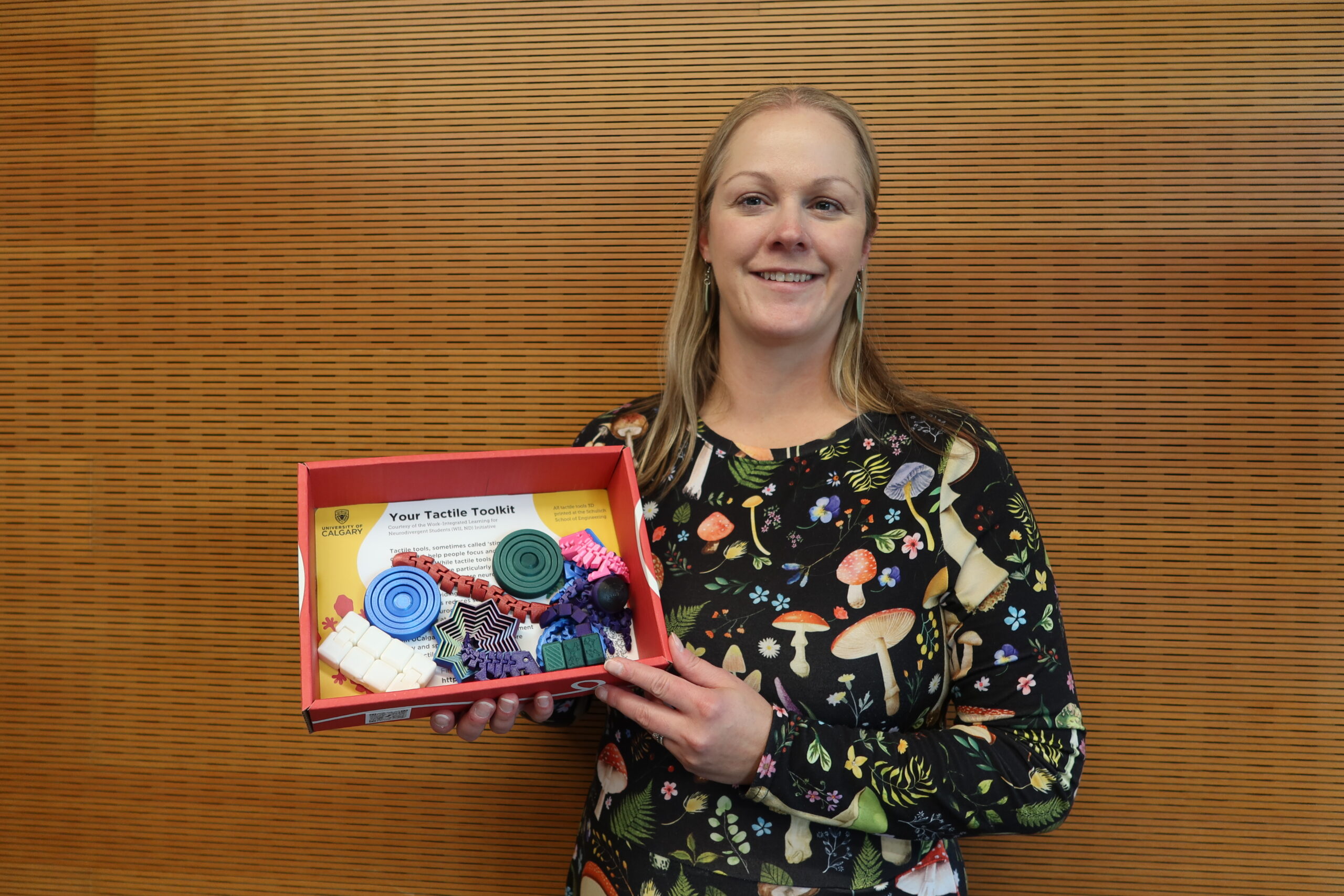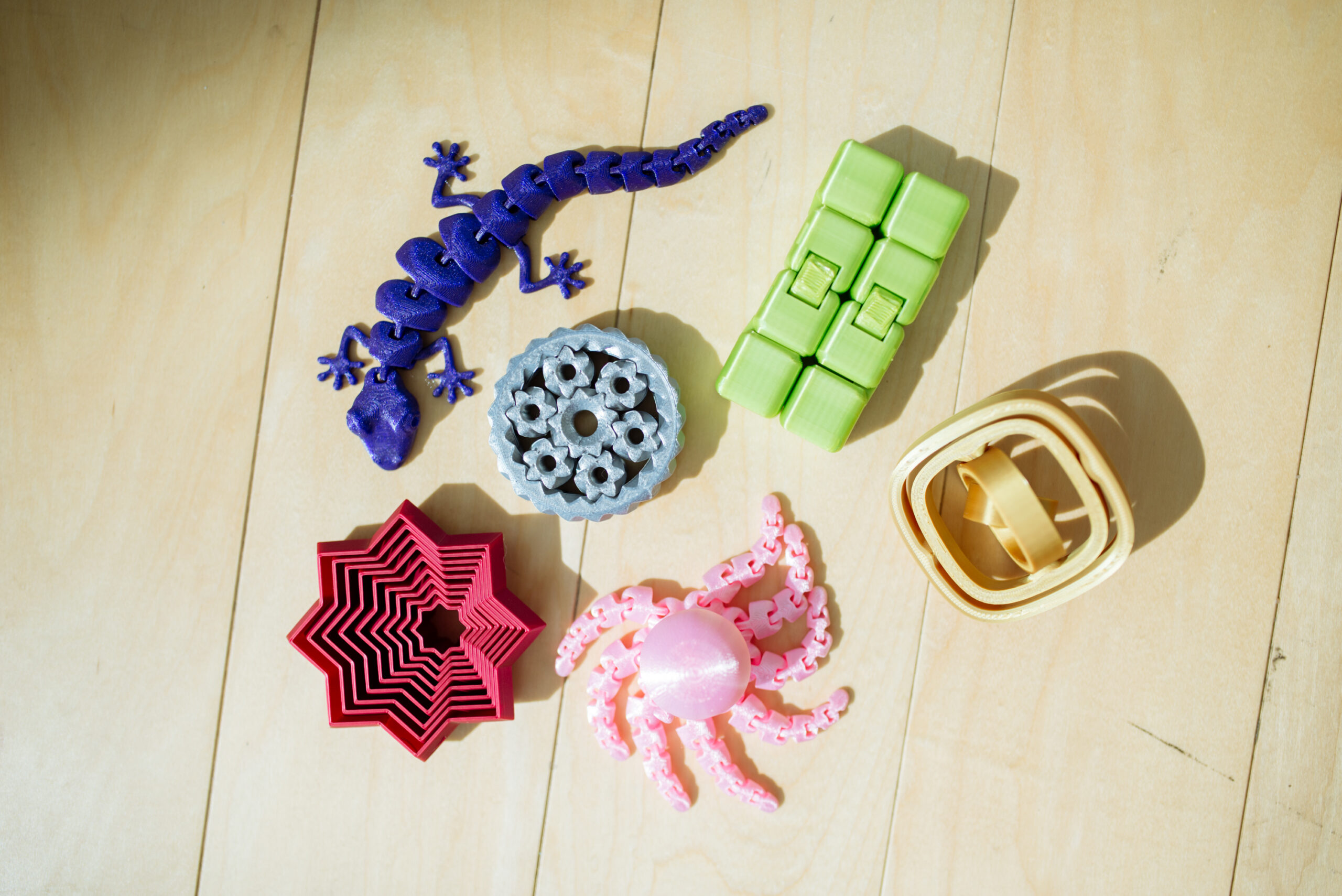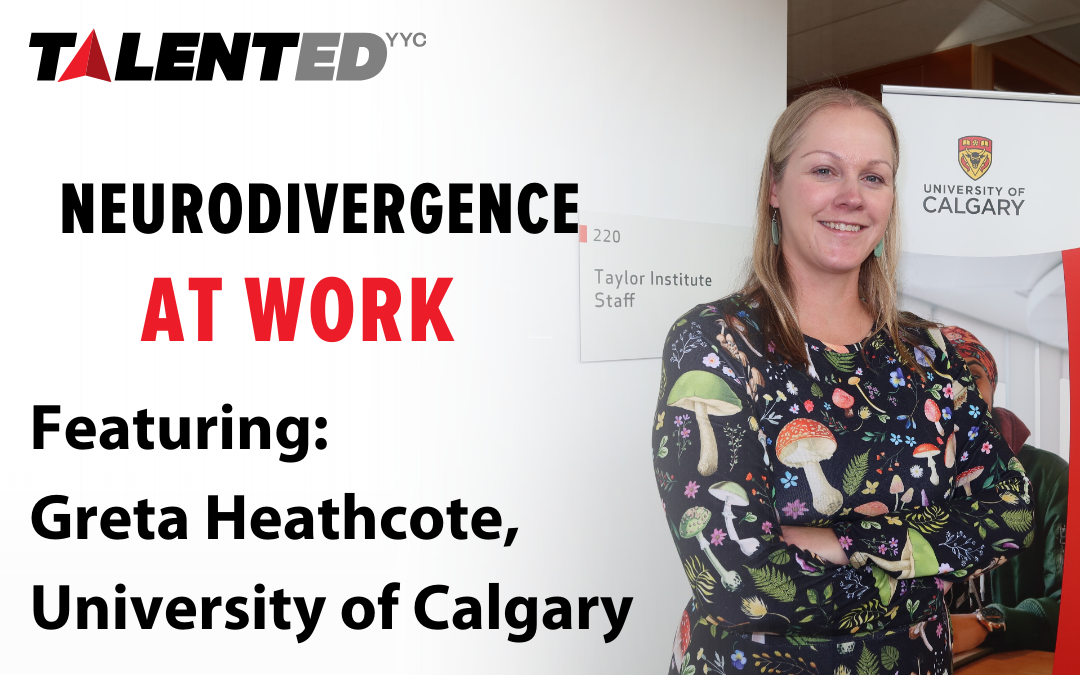In a world where conformity is often required, a movement towards accepting differences is gaining traction. At the University of Calgary, Greta Heathcote is the Associate Director of the Work-Integrated Learning and Neurodivergent Students Initiative and is at the forefront of a partnership with the Sinneave Family Foundation. By educating employers about neurodiversity, and by advocating for neurodivergent students, Greta is able to help everyone to succeed at work.
Embracing Neurodiversity at the University of Calgary
“Neurodiversity is the concept in which all brains work in different ways,” Greta explains. “Neurodivergence is a subset that encompasses behaviours, or ways of looking at the world, and simply ways of being that fall outside of the social norm.” In short, neurodiversity is an identity, not a medical diagnosis.
A way in which Greta’s team is helping the University of Calgary to become more inclusive is by adding sensory tools to various meeting spaces and advising offices on campus. A sensory tool is a non-disruptive object to hold in your hand. On top of helping people stay focused, having sensory tools available signals that it is a safe space to talk about neurodiversity. These are called “Tactile Toolkits.”
Another piece that Greta’s team is exploring and encouraging others to implement is including a neurodiversity statement on job postings. Though many organizations have EDI (Equity, Diversity, Inclusion) statements, the next step is adding a neurodiversity or an accessibility statement. Sometimes this statement can fall under the “A” or “accessibility” section of EDIA, or an organization may choose to list this in a more explicit way on a job posting or a website. This is a piece of information that applicants are actively seeking out.

Greta Heathcote holding a Tactile Toolkit.

A close-up look at a Tactile Toolkit. Photo taken by Elyse Bouvier
Neurodivergence at Work
It is important to remember that everyone is different, neurodivergent or not. Therefore, there is no one way that neurodiversity presents itself in the workplace. Some neurodivergent students may be excellent at problem-solving or pattern recognition, however, others may need more guidance. This is not a negative thing; rather, it gives you and your team the chance to act as mentors.
One specific tactic that Greta suggests to ensure that you and your student are on the same page is to provide clear, and unambiguous communication. An example that she shared was clarifying your organization’s dress-code. After all, business casual might mean different things to different people — especially to a student who has never worked in an office before. Therefore, instead of just saying “business casual,” you might say “I don’t expect you to buy a new wardrobe to work here,” or “most people in the office wear x, y, z to work.”
Easy Ways to Optimize the Workplace for Everyone
Neurodivergent students and employees sometimes require accommodations in the workplace. However, these inclusive options will often benefit many members of your team. In fact, rather than simply thinking “an employee with ADHD needs this…” Greta suggests that we should be asking “how can we make the entire process more accessible?”.
Three easy examples that you could implement today include:
- Giving candidates the option to receive interview questions in advance. Not only does this help reduce anxiety, and allow the candidate to sort through their thoughts in advance, but everyone undergoing the interview process benefits with the time to craft considerate answers.
- Offer or allow noise cancelling headphones. Many offices are busy, bustling places which can be distracting to any employee. Supporting ways to create focus time can help all team members be more productive and efficient.
- Create quiet work spaces. If an employee is dyslexic, or struggles with writing, they may use speech to text. However, this could be challenging to use in an open environment. Having a quiet space such as a phone booth or bookable space with a door is a considerate way to take virtual meetings in an open office.
By making your work environment more inclusive, you are making it better for every single employee.
“You’re already working with neurodivergent employees. We’re not talking about a really big shift, it’s about thinking about how to support the people that you already work with, and how to bring in the next generation that you’re going to be mentoring.”
– Greta Heathcote, Work-Integrated Learning and Neurodiversity Initiative Associate Director
Considerations for Hiring Neurodivergent Students
Greta says that one of the important pieces is to think about the skills and talents that you already have. Ultimately, diversity on your team benefits the thoughts, opinions, and problem-solving abilities of your existing employees. Therefore, when you are thinking about hiring neurodivergent students, Greta suggests thinking about the talents and the voices that are not already on your team.
By broadening the scope of recruitment to include neurodivergent individuals, your organization is actively helping differences to be welcomed at work. Not only are you further enhancing the talent pool, but you are also challenging the traditional notions of what a ‘good fit’ looks like. In the process, you are actively making the workplace better for every single employee.
Access More Talent With TalentED YYC
If you’re ready to diversify your team connect with us today! On top of providing individualized support to your organization, we can help you tailor your postings to be inclusive and accessible. Additionally, our team is partnered with all seven post-secondary institutions in Calgary, which means we can help you collaborate with experts like Greta.
If you would like to learn more, check out our Top Three Resources for Neurodiverse Student Hiring. You can also learn more about Greta’s work through the University of Calgary WIL Initiative website.
